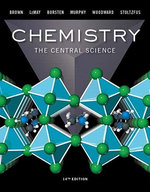?Which of the following statements is false? (a) Gases are far less dense than liquids. (b) Gases are far more compressible than li
Chapter 10, Problem 10.13(choose chapter or problem)
Which of the following statements is false?
(a) Gases are far less dense than liquids.
(b) Gases are far more compressible than liquids.
(c) Because liquid water and liquid carbon tetrachloride do not mix, neither do their vapors.
(d) The volume occupied by a gas is determined by the volume of its container.
Unfortunately, we don't have that question answered yet. But you can get it answered in just 5 hours by Logging in or Becoming a subscriber.
Becoming a subscriber
Or look for another answer
